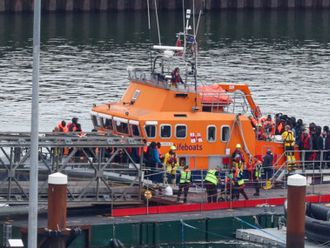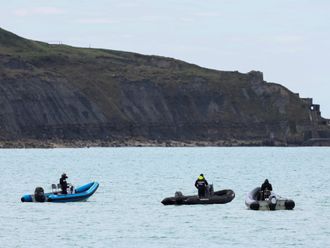Kiev: Workers on Saturday struggled to restore power to a flashpoint Ukrainian town as a deadline loomed for government forces and rebels to pull back their weapons after surging violence killed dozens.
Ukrainian officials and Russian-backed insurgents say the fighting that began on Sunday has killed 35 people in the eastern war zone — a level of bloodshed not seen since the height of the conflict in 2015.
The violence erupted as US President Donald Trump seeks to build a friendship with Russia’s Vladimir Putin with some analysts linking the escalation to the potential thaw in ties.
Russia and Ukraine as well as the rebels have agreed on a midnight (2200 GMT) deadline for the withdrawal of all heavy weapons from Avdiivka — an industrial town of 25,000 which has been on the front line of the fighting.
AFP correspondents in the town said the night and morning passed relatively calmly compared to previous ones.
But the Ukrainian army said one of its soldiers had been killed in the area.
“Tonight, we saw shelling on the outskirts of Avdiivka but there were no major attacks on the city itself,” regional police spokeswoman Nataliya Shyman told AFP.
Most residents of this blue-collar town work in a major coke plant that has been heavily damaged by the shelling.
The town remained without electricity on Saturday and with only sporadic power supplies to heat homes against the winter chill and limited supplies of water.
The giant plant provides electricity for much of the region and has been the target of previous deadly rebel attacks.
Plant spokesman Dmytro Murashko told AFP that work brigades would try again Saturday to repair broken power lines after shelling halted their earlier efforts.
Friday was one of the bloodiest days with nine civilians killed — two of them inside the town.
The call to withdraw heavy weapons was under the coordination of mediators from the Organisation for Security and Cooperation in Europe (OSCE).
It provides for the “withdrawal by 5 February 2017 into permanent storage sites of all weapons regulated by Minsk agreements to the distances defined in them and beyond the respective lines.”
The Minsk deal was signed in February 2015 and defined a step-by-step solution to one of Europe’s bloodiest conflicts since the 1990s Balkans wars.
It has since been repeatedly broken — prompting Wednesday’s meeting of negotiators to call for the warring sides to ensure “strict adherence to (a) full and comprehensive cessation of fire”.
Despite Wednesday’s talks the fighting has continued and seen dozens of homes destroyed and many afraid to walk the streets because of snipers and incoming shells.
The separatists’ sudden assault came after a monthlong spell of relative calm in the 33-month war in an escalation that has sharpened the world’s focus on the bloodshed in the European Union’s back yard.
The conflict began shortly after Ukraine ousted its Russian-back leader in February 2014.
Moscow responded by annexing Ukraine’s Crimea peninsula in March 2014 before allegedly plotting the eastern insurgency to keep Ukraine under its thumb after its tilt toward the West.
The Kremlin sees most of the former Soviet Union as part of its geopolitical sphere of influence.
That stance has been strongly disputed by Washington and European leaders such as German Chancellor Angela Merkel.
Washington’s UN ambassador Nikki Haley on Thursday condemned Russia’s “aggressive actions” in Ukraine — a surprising attack given Trump’s supportive stance towards Putin.
The US criticism of Moscow was likely welcomed in Kiev because Ukrainian officials have been concerned over Trump’s overtures toward Putin and his interest in working with the Russian leader on other global crises such as Syria.
Russia denies any responsibility for the conflict and blames the United States for igniting the protests that tilted Ukraine towards the West.












